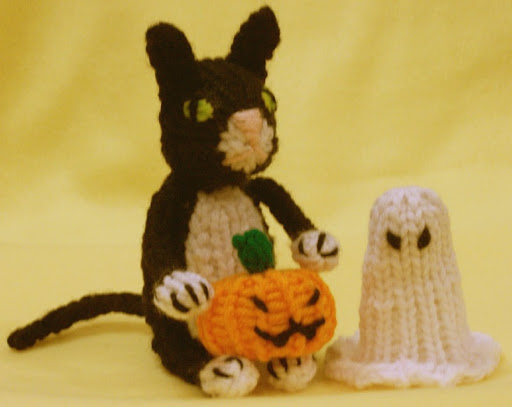
Just in time for Halloween, I give you Boo-Ella,
Jacko and Tom Tildrum. After five months, I finally got to create a few little pieces on the
Knifty Knitter Flower Loom. I'm giving a very general description as to how I made each these, since I simply do not have time to type up the detailed pattern.
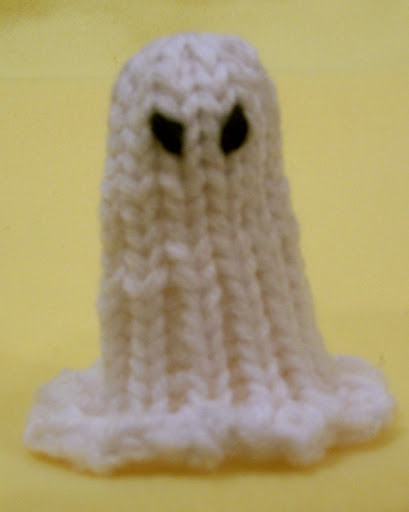
Boo-Ella, the little ruffled ghost, was the first of the trio completed. She stands 3.5 inches tall and was made from the top down. Using two strands of white Red Heart Classic, I did my drawstring cast on (explained in
The Easter egg reborn post) and then did a flat knit with varied tension (tighter at the top and looser at the bottom) for 18 rows. The ruffled edge was created usi
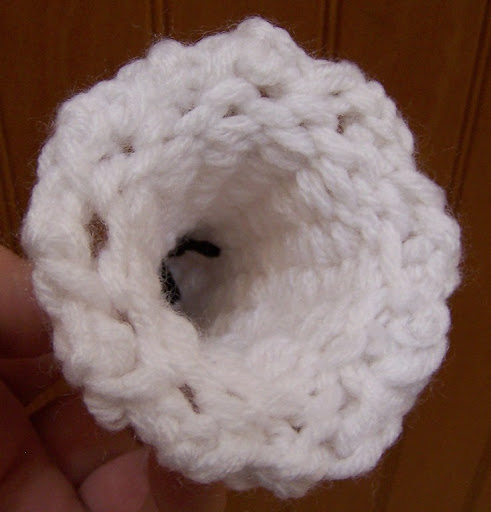
ng a three-stitch I-cord bind off on row 19. The I-cord bind off is a new technique I created just for this project, and it worked so well that I intend on using it on a baby bonnet pattern that I've had in mind. Duplicate stitch eyes were
embroidered to create a sinister look.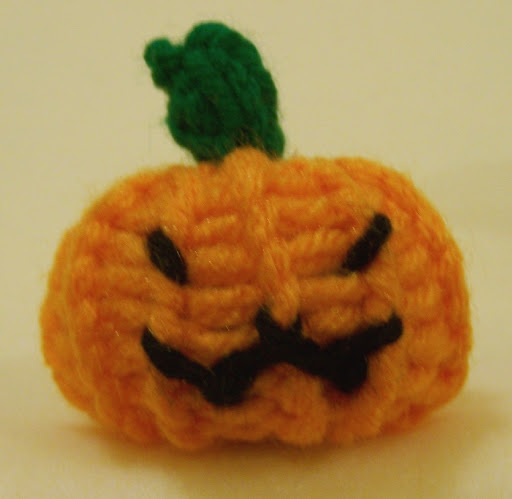 Jacko, my little jack-o-lantern, is a wee little fellow measuring only 2 inches from the top of his stem to his flat little bottom. He was created from the top down using two strands of orange and green Red Heart Classic. Again I used my drawstring cast on and did 12 rows of knit one/purl one ribbing. In order to help shape the item, I cinched the cast on edge that forms the top closed after about five or six rows. I did a gathered bind off after completing the 12 rows, but left the bottom open until the pumpkin was stuffed. After closing the bottom, the yarn was run through to the center top and back to the bottom to get the "pumpkin" shape. The stem was done using one strand of green yarn on the 5-peg end of the Knifty Knitter Spool Loom for five or six row, then attached to the top of the pumpkin. Facial features were embroidered with a single strand of black yarn.
Jacko, my little jack-o-lantern, is a wee little fellow measuring only 2 inches from the top of his stem to his flat little bottom. He was created from the top down using two strands of orange and green Red Heart Classic. Again I used my drawstring cast on and did 12 rows of knit one/purl one ribbing. In order to help shape the item, I cinched the cast on edge that forms the top closed after about five or six rows. I did a gathered bind off after completing the 12 rows, but left the bottom open until the pumpkin was stuffed. After closing the bottom, the yarn was run through to the center top and back to the bottom to get the "pumpkin" shape. The stem was done using one strand of green yarn on the 5-peg end of the Knifty Knitter Spool Loom for five or six row, then attached to the top of the pumpkin. Facial features were embroidered with a single strand of black yarn.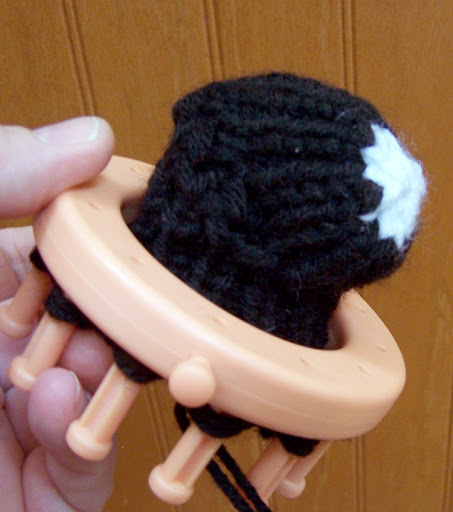
Tom Tildrum, named after a character from the story
King o' the Cats, was the more complex of the three. His head and body were made using short row shaping, similar to making a sock. Starting at the nose with two strands of white yarn, I used the drawstring cast on and flat knit one row. Switching to two strands of black, I did four rows before beginning the short rows to shape the back of the head. After the short rows, I did 24 more rows for the body before stuffing and closing with a gathered bind off. The neck was formed by running a strand of yarn at the base of the head and cinching it to define the neck.
The white chest/belly was knitted as a separate flat panel piece and attached to the chest/belly area of the cat. It was made using 2 strands of yarn and 5 pegs on the Flower Loom. After doing a drawstring cast on, I completed 15 rows and did a flat panel bind off. The drawstring edge was cinched to taper the top of the panel, which will be centered and attached just beneath the neck area.
Tom's Ears were made using 3 pegs on 5 peg end of the Spool Loom and casting on one stitch on peg 2, then wrapping the yarn around pegs 1, 2 & 3. This will leave two strands on the middle peg and one strand on peg 1 & 3. Knit off the middle peg and continue flat knitting for 6 more rows before doing a flat panel binding off.
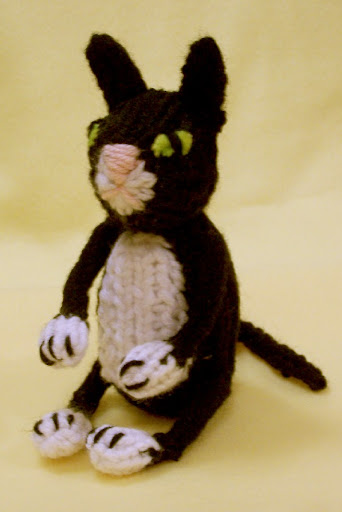
The legs and feet took several attempts before I was happy with them. They were made on the 5 peg end of the
Knifty Knitter Spool Loom. Starting with the feet and 2 strands of white yarn, I did my drawstring cast on and knitted for 5 row. The drawstring edge was cinched closed, then changed to 2 strands of black yarn and knitted one more row on the 5 pegs. Next I decreased by knitting off pegs 1 & 2, moving the loop from peg 4 to peg 3 and knitting off, and then moved the loop on peg 3 to peg 2. Next I moved the loop on peg 5 to peg 1, which will leave two sets of loops on both pegs 1 & 2 and no loops on pegs 3, 4 & 5. At this point, the foot was stuffed through the small opening before continuing. The leg was completed by working an I-cord for 12 more rows using pegs 1 & 2 and knitting 1 over 2. The tail was also completed in the same manner as the legs for about 18 rows. The tension must be kept as loose as possible when making the legs and tail or else knitting off the pegs becomes extremely difficult.
The cat was finished by attaching the ears, legs and tail. The nose and mouth were embroidered with one strand of pink yarn. The eyes are diamond shaped light green felt, whipped into place using a black embroidering thread with a few stitches added in the middle to form the eye pupil. Three straight long stitches were added to the paws to define the toes.
There were a several more fall projects I wanted to do, but I'll just have to put those on the back burner for now for a later day. Right now that back burner is pretty full.
 After making the Victorian Lace ornaments, I had some of the metallic colored Needloft Craft Cord left over. To me, the colors of the metallic cord are reminicent of the 40's vintage Shiny Brite ornaments. So with this in mind, I designed a little bell that is not only super quick to make, but has two different styles of rims. Last year I wrote a pattern for Knifty Christmas Bells, but this bell is even quicker, easier and more fun to make than the Knifty Bell.
After making the Victorian Lace ornaments, I had some of the metallic colored Needloft Craft Cord left over. To me, the colors of the metallic cord are reminicent of the 40's vintage Shiny Brite ornaments. So with this in mind, I designed a little bell that is not only super quick to make, but has two different styles of rims. Last year I wrote a pattern for Knifty Christmas Bells, but this bell is even quicker, easier and more fun to make than the Knifty Bell.  The first style rim, the fastest of the two, is the garter stitch rim which is made by alternating the last three rows with purl & flat knit stitches, then finished with a basic flat panel bind off. You can also add a little variety by using a contrasting color cord to create a stripe. The gold bell pictured on the left has a red cord added on rows 6-8 for the stripe.
The first style rim, the fastest of the two, is the garter stitch rim which is made by alternating the last three rows with purl & flat knit stitches, then finished with a basic flat panel bind off. You can also add a little variety by using a contrasting color cord to create a stripe. The gold bell pictured on the left has a red cord added on rows 6-8 for the stripe. The second style rim uses the I-cord bind off to create a little flare. You can vary the number of stitches in the I-cord to suit your taste. The white bell pictured on the right was made using Needloft white/silver and a 3 stitch I-cord edge. This style is not only good for holiday ornaments, but when done in white it makes a very nice wedding decoration.
The second style rim uses the I-cord bind off to create a little flare. You can vary the number of stitches in the I-cord to suit your taste. The white bell pictured on the right was made using Needloft white/silver and a 3 stitch I-cord edge. This style is not only good for holiday ornaments, but when done in white it makes a very nice wedding decoration.



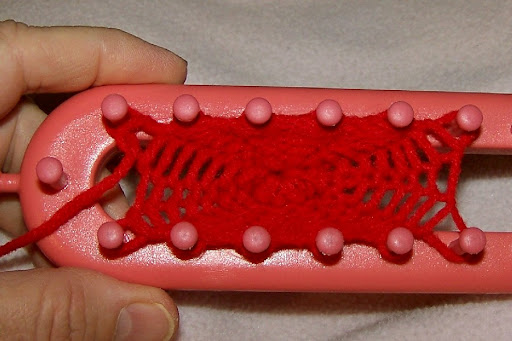



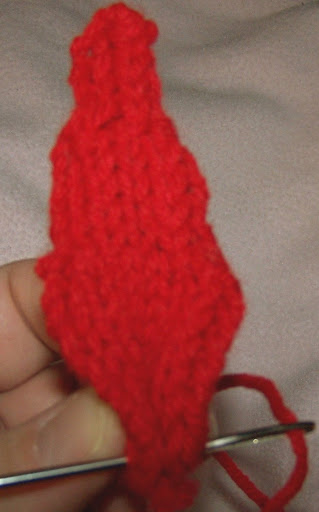

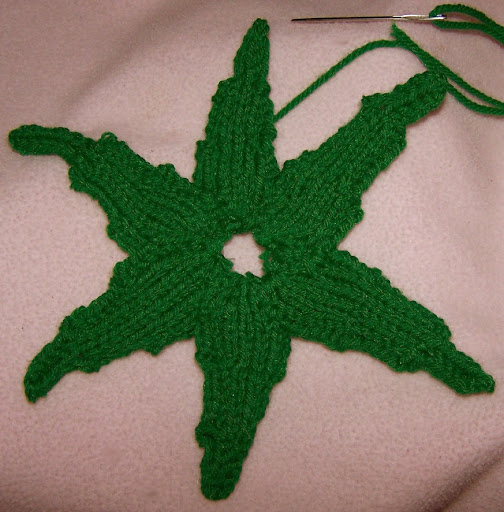



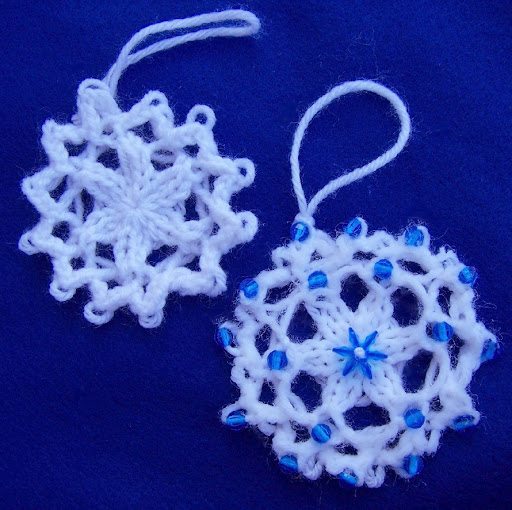




 Tom Tildrum, named after a character from the story
Tom Tildrum, named after a character from the story 




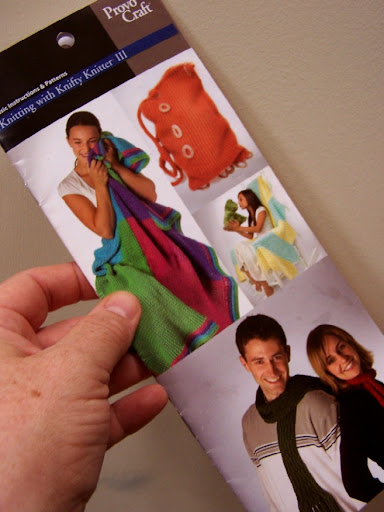




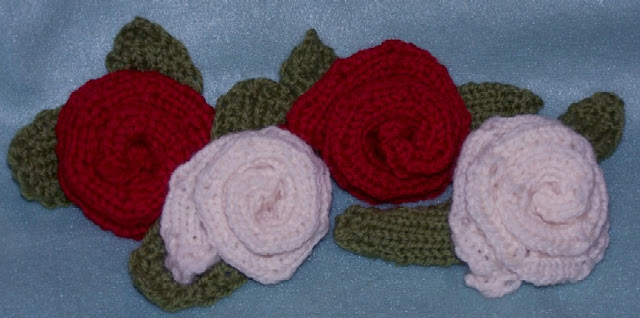





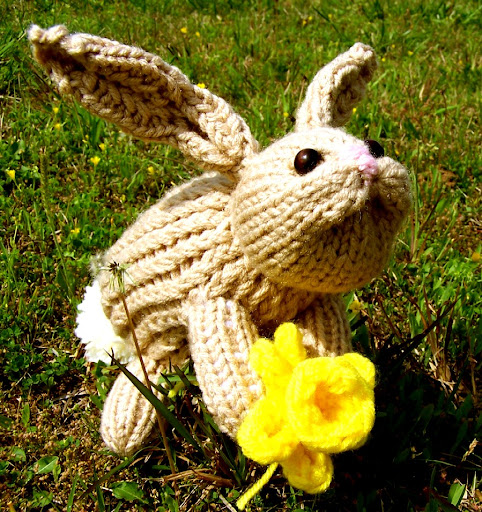




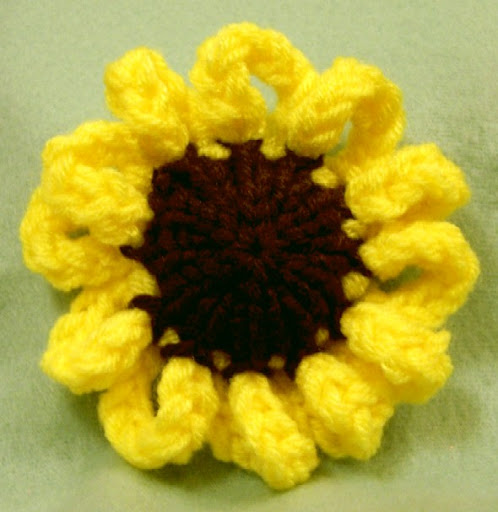
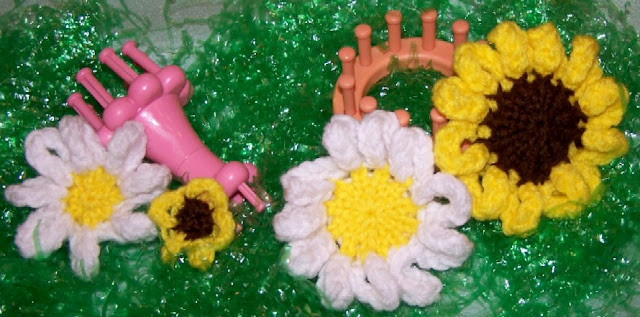
 OK, I'm in panic mode. I have so many ideas and so little time to do them. We are getting ready to go on vacation to Argentina and
OK, I'm in panic mode. I have so many ideas and so little time to do them. We are getting ready to go on vacation to Argentina and 



